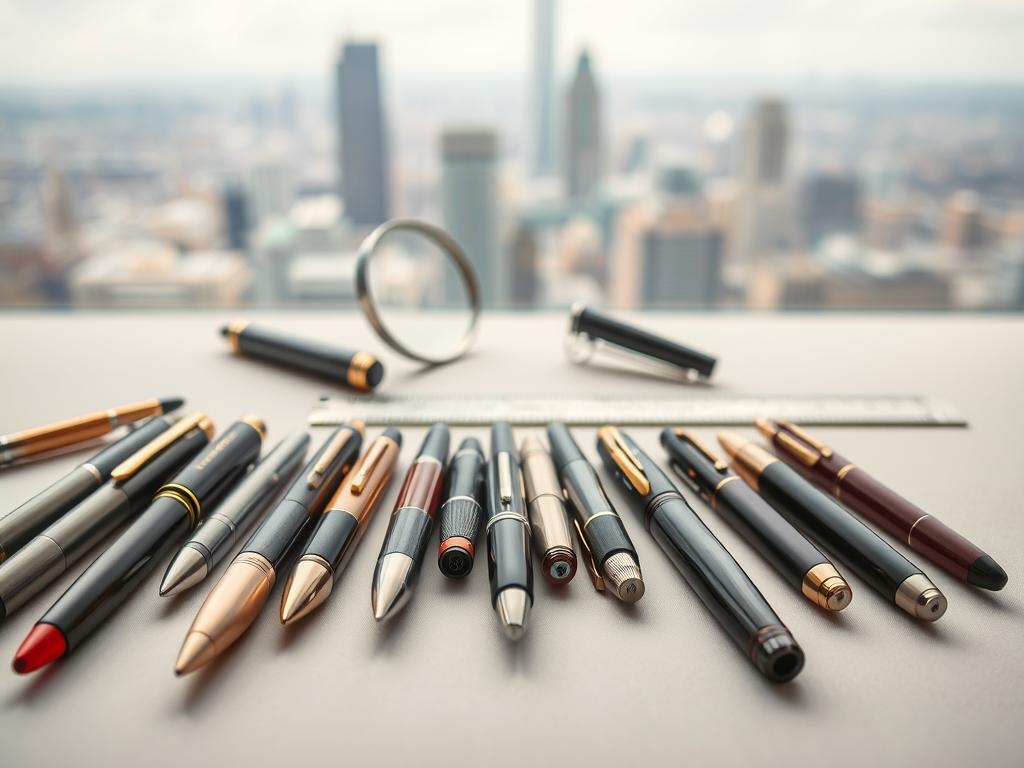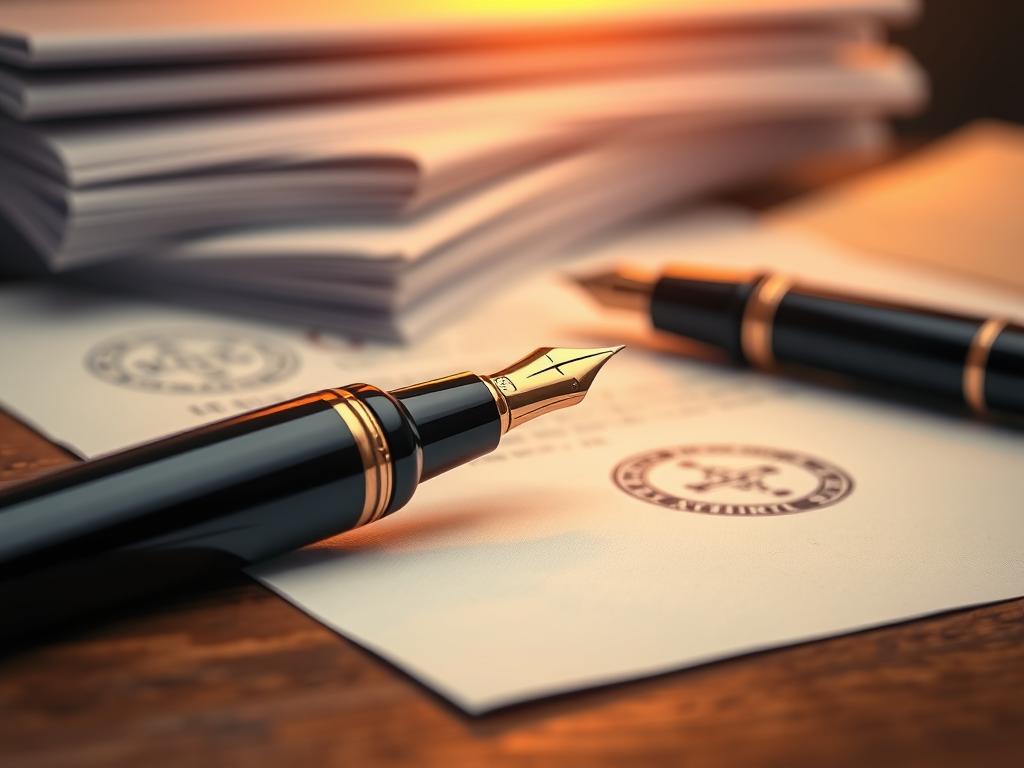Discovering a unique writing instrument overseas can be thrilling, but customs rules and import fees often surprise travelers. Understanding these regulations ensures your prized fountain pen arrives home without unexpected costs or delays.
Many enthusiasts focus on design or nib quality when selecting a writing tool abroad. However, overlooking duty thresholds and documentation requirements risks turning a joyful purchase into a logistical headache. This guide prioritizes practical safeguards for international shoppers.
From researching import limits to declaring items properly, each step matters. Luxury fountain pens often carry higher duty rates than standard models. Travelers should verify their country’s de minimis value – the price threshold where taxes apply.
Packaging and receipts prove essential during customs inspections. Keeping original boxes protects delicate nibs during transit while providing proof of purchase. Digital copies of invoices offer backup if physical documents get misplaced.
Key Takeaways
- Research destination country’s duty-free limits before traveling
- Preserve original packaging and purchase documentation
- Understand differences in tax rates between standard and luxury writing instruments
- Declare items accurately to avoid penalties
- Consider insurance for high-value acquisitions
Understanding Duty and Import Regulations
International shoppers often face unexpected costs when acquiring specialty writing tools. Taxes and handling fees can add 20-30% to the original price, turning a thoughtful purchase into a budget challenge. Preparation helps avoid surprises at customs checkpoints.
Breaking Down VAT and Customs Charges
Value-Added Tax (VAT) applies differently across countries. The U.S. imposes a 3-7% duty on most imported writing instruments, while European Union rates reach 20% for items over €150. Courier services like DHL often add:
- Processing fees ($10-$25)
- Storage charges for delayed pickups
- Currency conversion premiums
| Country | Duty Threshold | VAT Rate | Courier Fees |
|---|---|---|---|
| United States | $800 | 0% | $15-30 |
| Germany | €150 | 19% | €10-25 |
| Japan | ¥10,000 | 10% | ¥1,500-3,000 |
Spotting Hidden Costs
Customs forms require precise declarations. A nib customization listed as “repair” instead of “modification” might trigger extra inspections. Always request detailed invoices showing:
- Item descriptions with nib size specifications
- Separate material costs (gold vs steel nibs)
- Original currency amounts
One traveler reported a $42 FedEx fee for a $160 pen shipment despite prepaid taxes. Such cases highlight why reviewing shipping terms matters before confirming orders.
Preparing for Your International Pen Purchase
Smart preparation transforms international pen shopping from overwhelming to enjoyable. Start by mapping trusted retailers and understanding how ink quality and design influence long-term satisfaction. Seasoned collectors recommend dedicating time to compare options before committing funds.
Researching Global Retailer Options
Quality varies significantly between regions. Japanese retailers often stock limited-edition fountain pens with specialized nibs, while European sellers provide classic designs. Check reviews on stationery forums to gauge:
- Shipping reliability across continents
- Packaging standards for delicate items
- Responsiveness to customization requests
| Retailer Region | Average Delivery Time | Price Range | Customer Rating |
|---|---|---|---|
| Asia | 10-14 days | $80-$600 | 4.7/5 |
| Europe | 7-10 days | $120-$800 | 4.5/5 |
| North America | 3-5 days | $50-$400 | 4.3/5 |
Setting a Realistic Budget and Timeline
Allocate 15-20% extra funds for customs and unexpected fees. One enthusiast shared, “My $200 pen required $38 in import charges and a three-week wait.” Use this guide to avoid similar surprises:
- Compare base prices across three retailers
- Add regional tax estimates
- Factor in currency conversion rates
Prioritize sellers offering tracking numbers and insurance. Those tight on time should focus on retailers with proven fast-turnaround histories.
Confirming Your Pen Choice with Confidence
Selecting the perfect writing instrument requires more than admiring product photos. Savvy shoppers cross-reference multiple sources to verify a pen’s size, nib performance, and compatibility with their preferred ink paper types. This step transforms uncertainty into assurance.
Reviewing Trusted Blogger and Social Media Insights
Top pen reviewers share hands-on experiences that specs alone can’t capture. A blogger might note how a nib behaves on textured paper or whether a pen’s weight causes fatigue during long sessions. Look for:
- Video demonstrations of nib sizes in action
- Comparisons against common household items for size context
- Discussions about ink paper absorption rates
Comparing Real-World Pen Sizes and Photos
Manufacturer images often lack scale references. Enthusiast forums frequently post side-by-side shots showing how a pen’s case dimensions compare to standard notebooks or smartphones. Three elements matter most:
- Section diameter for comfortable grip
- Total length when posted vs unposted
- Nib alignment with writing angle
One Reddit user discovered their dream pen felt awkward after seeing it dwarf a passport in travel photos. Such insights help avoid costly mismatches between expectation and reality.
buying pens abroad tips
Navigating overseas purchases becomes effortless when following structured guidance. Many collectors made mistakes early in their journeys – from overlooking nib details to misjudging shipping timelines. Learning from these experiences helps others avoid similar frustrations.

Proven Methods for Error-Free Transactions
Successful international purchases rely on systematic verification. Always make sure to:
- Compare product photos across three sources (retailer sites, forums, social media)
- Read recent comments about sellers at pen shows or online marketplaces
- Confirm nib specifications with retailers via email before payment
One Reddit user shared how they made a mistake by not requesting writing samples. “The medium nib wrote like a broad,” they noted. Now, people in their collector group always ask for video demonstrations.
Social platforms offer real-time insights. Check Instagram hashtags like #PenHaul or YouTube reviews for unfiltered opinions. When multiple people mention feed issues with a specific model, consider alternative options.
Finally, make sure to verify inventory availability before traveling to pen shows. A popular Tokyo event last year sold out of limited editions within hours, disappointing many unprepared attendees.
Choosing the Right Retailer
Quality writing tools deserve equally reliable sellers. Whether seeking a new pen or rare collectible, the retailer’s reputation directly impacts satisfaction and long-term value. Three factors separate exceptional vendors from average ones.
Evaluating Stock, Nib Options, and Authenticity
Top-tier shops showcase detailed product pages with nib size comparisons and manufacturing origins. Look for brands like Pilot or Pelikan that provide:
- Certificates of authenticity for limited editions
- Converter compatibility lists
- High-resolution images of pens made with specific materials
One collector shared how a Tokyo shop demonstrated nib flexibility using different ink paper types. This hands-on approach builds trust in craftsmanship. Always verify if retailers stock specialty items like dip pens – their availability often signals deep expertise.
Supporting Authorized Dealers and Local Businesses
Authorized sellers protect buyers through manufacturer-backed warranties and return policies. A Chicago-based stationery store recently helped a customer replace a defective converter within 24 hours. Compare this to third-party sellers who might offer lower prices but lack technical support.
Local businesses frequently carry exclusive designs. For example, a family-owned Austrian workshop produces pens made from regional walnut wood. These unique finds often appreciate in value, unlike mass-produced alternatives.
When choosing between brands, consider shops offering repair services or nib customization. These extras transform transactions into lasting relationships – essential for collectors building curated collections over time.
Managing Costs and Exchange Rates Effectively
Smart shoppers know the final price isn’t just about the pen itself. Shipping fees, currency shifts, and payment methods can turn a great deal into an overpriced headache. A little planning keeps your budget intact while securing that perfect writing tool.
Understanding Shipping Options and Tracking
Courier services vary wildly in speed and reliability. While express shipping sounds tempting, ground transport might save $15-$30 for non-urgent purchases. Always check if retailers include:
- Real-time tracking numbers
- Insurance for high-value inks or accessories
- Customs pre-clearance support
| Service | Delivery Time | Insurance Limit | Tracking |
|---|---|---|---|
| DHL Express | 2-4 days | $500 | Hourly updates |
| USPS Priority | 6-10 days | $100 | Daily scans |
| FedEx Ground | 5-7 days | $300 | Key milestones |
Securing the Best Currency Conversion Rates
Credit cards often offer better rates than airport kiosks. One collector saved 4% using a travel-friendly card for a Japanese ink purchase. For larger orders:
- Compare bank transfer fees vs PayPal rates
- Activate retailer discount codes before checkout
- Time purchases during favorable exchange windows
Digital wallets like Wise simplify multi-currency transactions. Their prepaid cards lock in rates when adding funds, protecting against sudden market swings. Always keep purchase documents in protective bags – customs may request them months later for verification.
Understanding Pen Specifications and Nib Sizes
Selecting the perfect nib feels like choosing a musical instrument – each variation sings a different tune on paper. While aesthetics matter, technical details determine how a writing tool performs in daily use. Let’s explore the things that transform good pens into great ones.
Exploring EF, F, M, and B Nib Variations
Nib sizes shape writing personality more than any other feature. Extra Fine (EF) nibs create precise lines ideal for small handwriting, while Broad (B) options make bold statements. This table shows how different grades perform:
| Nib Type | Line Width | Best For | Ink Flow |
|---|---|---|---|
| EF (0.3mm) | Hairline | Detailed notes | Low |
| F (0.5mm) | Thin | Everyday writing | Moderate |
| M (0.7mm) | Medium | Signatures | Generous |
| B (1.0mm) | Thick | Calligraphy basics | High |
Calligraphy enthusiasts often prefer specialty nibs like stubs or italics. These create dramatic line variations – thin upstrokes and thick downstrokes – that turn ordinary writing into art. As one collector noted: “My 1.5mm stub nib way of gliding across paper makes addressing envelopes feel luxurious.”
Assessing Pen Weight, Balance, and Design
Three things determine comfort during long writing sessions: barrel diameter, center of gravity, and material density. Brass-bodied pens feel substantial but may tire hands, while lightweight resins suit marathon journaling. Consider this comparison:
| Material | Average Weight | Grip Comfort | Best Use |
|---|---|---|---|
| Aluminum | 28g | Cool touch | Short notes |
| Resin | 18g | Warm feel | Extended writing |
| Ebonite | 22g | Textured | Calligraphy work |
The way a pen balances affects control. Front-weighted designs help guide nibs smoothly, while rear-heavy models suit those who write with relaxed grips. Always test a pen’s posture – the sweet spot between finger placement and nib alignment makes all the difference.
Optimizing Your Purchase Experience
The moment your package arrives marks a critical checkpoint in your collector’s journey. Careful verification ensures your writing instrument meets expectations while protecting your investment. Follow this systematic approach to confirm every detail aligns with your purchase agreement.

Inspecting Packaging and Warranty Details
Begin by examining the outer shipping box for dents or water damage. One collector shared: “A crushed corner alerted me to potential nib misalignment before even opening the parcel.” Document any issues with timestamped photos for seller communication.
Compare these key elements against your order confirmation:
| Packaging Element | What to Verify | Why It Matters |
|---|---|---|
| Retailer’s box | Branding matches seller | Authenticity confirmation |
| Serial numbers | Matches warranty card | Future service claims |
| Ink cartridges | Seal integrity | Prevents drying/leaks |
Preserve all packaging materials, including:
- Original box with foam inserts
- Warranty booklet with stamped dates
- Certificates of authenticity
Retailers often require intact packaging for returns. Store these materials in protective sleeves or archival containers. As one workshop manager notes: “A complete presentation box increases resale value by 15-20% for limited editions.”
Finally, test the pen’s functionality immediately. Many warranties expire 30 days after delivery. Quick action ensures you qualify for replacements if issues surface later.
Preparing for Post-Purchase Checks and Maintenance
Ensuring your new writing instrument performs flawlessly starts with proper post-purchase care. Immediate checks prevent issues like ink leaks or misaligned components from affecting long-term use. Follow this streamlined process to confirm your pen operates as intended.
Steps to Inspect and Test Your New Pen
Begin by examining the feed mechanism under bright light. Look for proper alignment between the nib slit and ink channel. A crooked feed can cause inconsistent ink flow. Gently twist the cartridge connector to confirm secure attachment.
For pens with piston fillers, cycle the mechanism 3-4 times without ink. Smooth movement indicates proper lubrication. If resistance occurs, flush the barrel with cool water. Allow components to air-dry completely before reassembly.
| Checkpoint | Tools Needed | Acceptable Result |
|---|---|---|
| Feed alignment | Magnifying glass | Central ink channel visibility |
| Cartridge seal | Tissue paper | No ink smudges after shaking |
| Piston smoothness | Distilled water | Silent operation, no skipping |
Flush new pens with a bulb syringe and lukewarm water. This removes manufacturing residues that might clog the feed. Test writing on quality paper using short strokes and varied pressure. Consistent ink distribution confirms proper cartridge installation.
Store maintenance supplies in labeled containers for quick access. One collector swears by “Sunday pen care rituals that keep my collection writing like new.” Regular checks extend your instrument’s lifespan while preserving its value.
Conclusion
Securing the perfect writing instrument internationally combines preparation with passion. Thoughtful planning transforms potential headaches into smooth transactions, letting enthusiasts focus on craftsmanship rather than customs forms.
This guide outlined essential safeguards – from decoding regulations to verifying nib specifications. Choosing a trusted retailer and preserving documentation remain critical for protecting your investment. Post-purchase maintenance ensures lasting performance, whether using daily or displaying in a collection.
Every step builds confidence. Imagine unwrapping a flawlessly packaged pen, knowing you navigated taxes and shipping like a pro. That satisfaction comes from applying structured research and attention to detail.
Now equipped with these strategies, collectors can explore global markets with assurance. Each carefully selected piece becomes more than a tool – it’s a story of smart decisions and cross-border discovery. Happy hunting!
FAQ
How do VAT charges affect international pen purchases?
VAT rates vary by country and apply to items exceeding specific value thresholds. Buyers should research their local customs policies before ordering to avoid unexpected fees. Some retailers include VAT prepayment options at checkout.
What’s the best way to compare nib sizes like EF or B?
Brands like Pilot and Lamy provide detailed nib comparison charts. For precision, watch video reviews showing writing samples on common paper types like Rhodia or Tomoe River. Physical stores often let customers test nibs before buying.
How can buyers verify a pen’s authenticity when shopping online?
Authorized dealers like Goulet Pens or Appelboom provide certificates of authenticity. Check for serial numbers on luxury brands like Montblanc and cross-reference them with manufacturer databases. Unboxing videos from trusted sources help spot counterfeit packaging.
Are currency conversion tools reliable for international purchases?
Services like Wise or Revolut offer real-time exchange rates with lower fees than credit cards. Always check mid-market rates before checkout and confirm if the retailer charges in local currency to avoid dynamic currency conversion markups.
Why does pen weight matter for international shipping?
Heavier pens like brass-bodied models from Kaweco may increase shipping costs. Airlines also impose weight limits for carry-on stationery collections. Retailers like JetPens often list product dimensions and weights for budget planning.
What warranty checks should be done after delivery?
Inspect warranty cards for authorized dealer stamps and validate coverage dates through manufacturer websites. Brands like TWSBI often require original purchase receipts for nib replacements or feed adjustments.
How do piston-fillers impact maintenance during travel?
Piston mechanisms in pens like Pelikan Souveräns require silicone grease for smooth operation. Buyers in humid climates should inquire about corrosion-resistant materials. Retailers like Cult Pens often include maintenance guides with such models.
Can local businesses help with nib customization abroad?
Stores like Yoseka Stationery in New York or Itoya in Tokyo offer grind services for Japanese EF or Western M nibs. Always confirm turnaround times and compatibility with specific ink types like pigmented or shimmer formulas.


